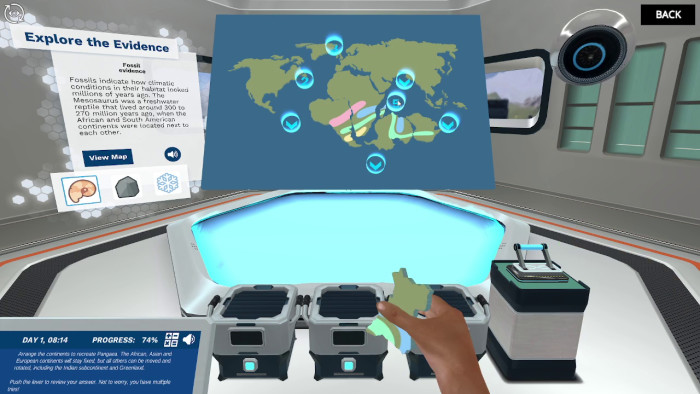
Imagine looking at a world map and seeing all the continents together like puzzle pieces, forming a single, massive supercontinent. Over millions of years, this supercontinent slowly breaks apart, drifting to form the distinct landmasses we know today. This isn't an alternate universe, but rather the fascinating story of our Earth as explained by the Continental Drift Theory, discovered by Alfred Wegener.
According to National Geographic, “Alfred Wegener published a paper explaining his theory that the continental landmasses were ‘drifting’ across the Earth, sometimes plowing through oceans and into each other. He called this movement continental drift.”
Understanding the theory of continental drift is a fundamental part of earth science. However, it can sometimes prove challenging to effectively communicate this concept to students in a manner that is both educational and engaging. Here are five effective methods to make teaching the theory of continental drift interactive, fun, and relatable to students:
One of the most effective ways to teach the theory of continental drift is by using interactive models. These can be physical models, such as puzzle pieces that represent different continents, which can be moved around to illustrate how continents have drifted over millions of years. This hands-on approach helps students understand the complex concept of plate tectonics and the shifting of continents in a simple and clear way with each puzzle piece.
The introduction of games and activities can make the topic more engaging and enjoyable for students. For instance, you can create a jigsaw puzzle game with continent pieces from different geologic eras. Students can work in groups to assemble the continents in their correct locations during different periods, promoting cooperation and active learning.
Adding virtual labs to your lessons, like the one provided by Labster (Continental Drift Theory: Past and future locations of the world's continents), is another fantastic way to make the topic fun and interactive. In Labster's continental drift simulation, students get to investigate different forms of evidence that support the theory.

They use this knowledge to predict where the continents were located in the past and where they will move in the future. This kind of hands-on virtual experience helps students grasp the theory's intricacies while enhancing their problem-solving and critical-thinking skills.
In this digital age, incorporating technology into lessons is an effective strategy for improving student engagement. There are various digital resources and tools available that can aid in teaching the continental drift theory. These include educational videos, interactive software, and online simulations that illustrate how continents have had plate movement over time.
One such resource is Labster, an online platform that offers a Continental Drift Theory virtual lab where students can investigate the different forms of evidence that support the theory. By using this technology, students can get a more in-depth view of the theory, which helps to improve comprehension and retention of the concept.

Furthermore, other platforms like Google Earth allow students to visualize the continental drift process in a dynamic, three-dimensional perspective, fostering a deeper understanding of the topic. Technology not only enhances the learning process but also ensures that it is interactive, engaging, and fun for students.
Teaching the continental drift theory in the context of real-world careers can inspire students and demonstrate the practical applications of the topic. Invite professionals like geologists, seismologists, or even climate scientists to give talks about how their work involves the understanding of continental drift. This approach can spark curiosity and help students see the direct implications of what they learn in the classroom, possibly even encouraging them to consider a career as a scientist in a related field.
Showing students how continental drift theory is relevant to their daily lives and the real world can make learning more meaningful. This theory plays a key role in understanding various phenomena like earthquakes, volcano activity, and climate change. By connecting these events to the movement of tectonic plates, students can better grasp why this theory is important. You can use news articles, documentaries, or field trips to places of geologic interest to illustrate these connections.
Teaching the theory of continental drift doesn't have to be a complex task in earth science. By employing these interactive, fun, and relatable teaching methods, you can ensure that your students develop a robust understanding of this fundamental scientific concept while maintaining their interest and enthusiasm. This education may even make them want to become a scientist one day!
Try our free 30-day All Access Educator's Pass today and teach with the Continental Drift Theory simulation alongside 300+ other virtual labs!

Labster helps universities and high schools enhance student success in STEM.
Request DemoRequest a demo to discover how Labster helps high schools and universities enhance student success.
Request Demo